Have you ever had a student draw an image so small that they can’t even fit the paint inside when they finish? Chances are, if you teach art to students, you’ve likely struggled with students who draw microscopic images on their paper. But how do you encourage students to begin to draw big enough to fill their paper?
I’m going to share with you three strategies that worked in my classroom to help students to draw large and make use of their entire paper.
Watch the full video tutorial here…
DOWNLOAD the Drawing Big Cheat Sheet below…
TIP #1: SKIP THE PENCIL IN FAVOR OF OIL PASTEL OR CRAYONS
The first step in getting students to draw larger is to get ride of your pencils. Pencils, with their tiny sharp leads almost instinctively encourages students to draw tiny details, which in turn, lead to small drawings.
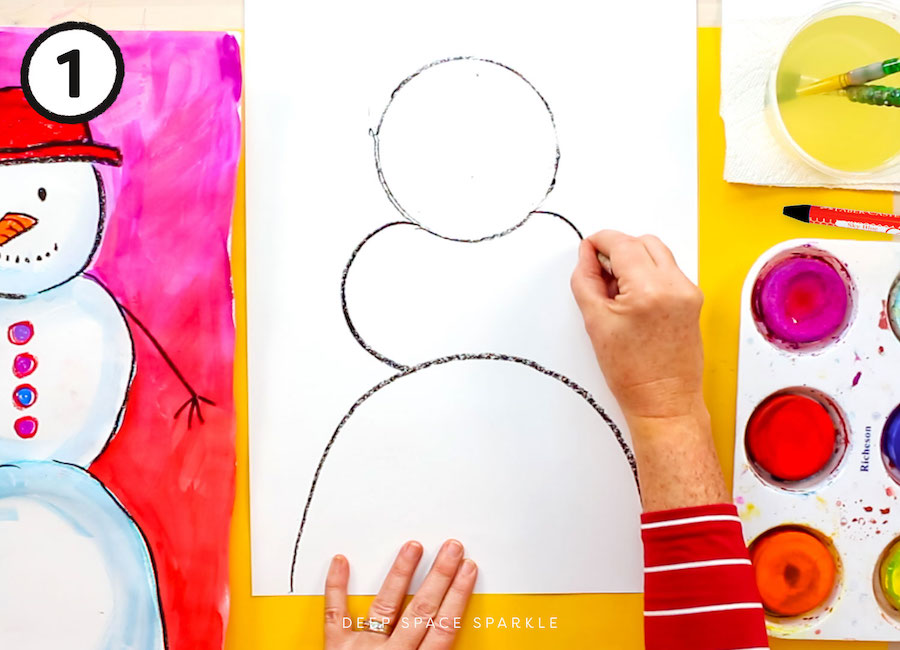
Instead of pencils for drawing, try using black oil pastels. The tip on an oil pastel is much thicker than a pencil, which will force students to draw their images larger in order to draw a specific subject. They won’t be focused on the little details, and will instead be more inclined to draw big shapes that go all the way across their paper.
If you don’t like the bold look of black oil pastel, you can always use yellow or blue, or any other color that works for you.
TIP #2: USE THE PAPER & FINGER PLACEMENT TO BRING AWARENESS TO THE PAPER SIZE
Using a hand or fingers as a placement tool can be very effective and easily accessible for students.
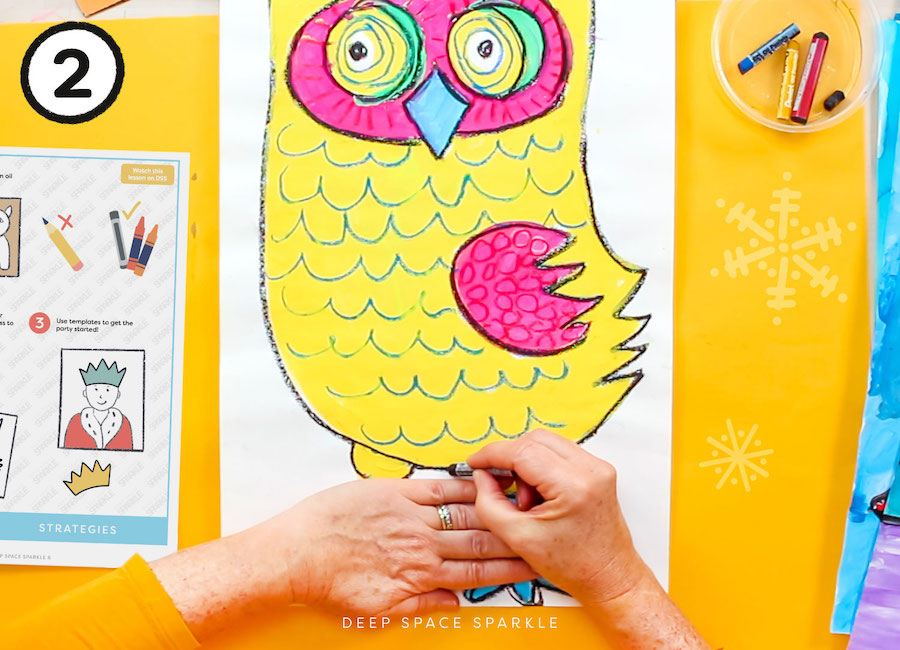
Try beginning a drawing by having students measure two finger widths from the top of their paper, then have them make a dot as a guide for where the top of the head should be. Or try using a full hand width, with the thumb at the bottom of the paper to measure how close to the bottom of the page the drawing should come, marking with a dot at the pinky.
By giving students indicators for the placement of certain parts of a drawing, you are giving them a visual cue to fill the page with their drawing.
Also, consider using directional terms when you teach like; bottom of the paper, top of the paper, left side and right side to help students to see the paper as a whole.
TIP #3: USE TEMPLATES TO GET THE PARTY STARTED
Templates can be a helpful jumping off point for students of any age. Whether it’s a plastic life or a shape cut out of cardboard for students to trace, beginning a drawing with a template will help to encourage the rest of a student’s drawing to match the size of the template.
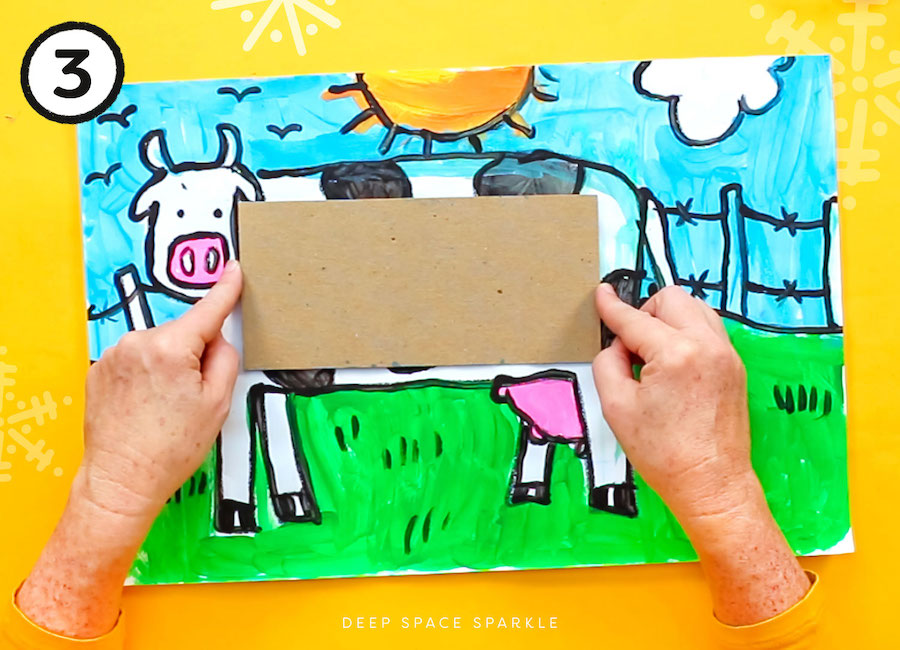
Try using a large crown template to start a royal portrait. When students trace the crown, then add the portrait underneath, they are forced to draw their portrait on a large scale that matches the size of the original traced template. This would often not be the case if you had students draw the portrait first using no template.
BONUS TIP: USE A PAINTBRUSH TO DRAW
Here’s a bonus tip for you; instead of a pencil or oil pastel, try giving students a small paintbrush and black tempera paint to draw with. The brush won’t allow them to draw small and they will be forced to use larger hand movements to make bigger shapes.
Click the button below to DOWNLOAD the December Project Guide. Add your name and email and we’ll send it to you!
For more on helping students learn to draw big, check out my other blog post, How to Get Children to Draw Big, and download a free classroom teachers toolkit to use in your classroom.
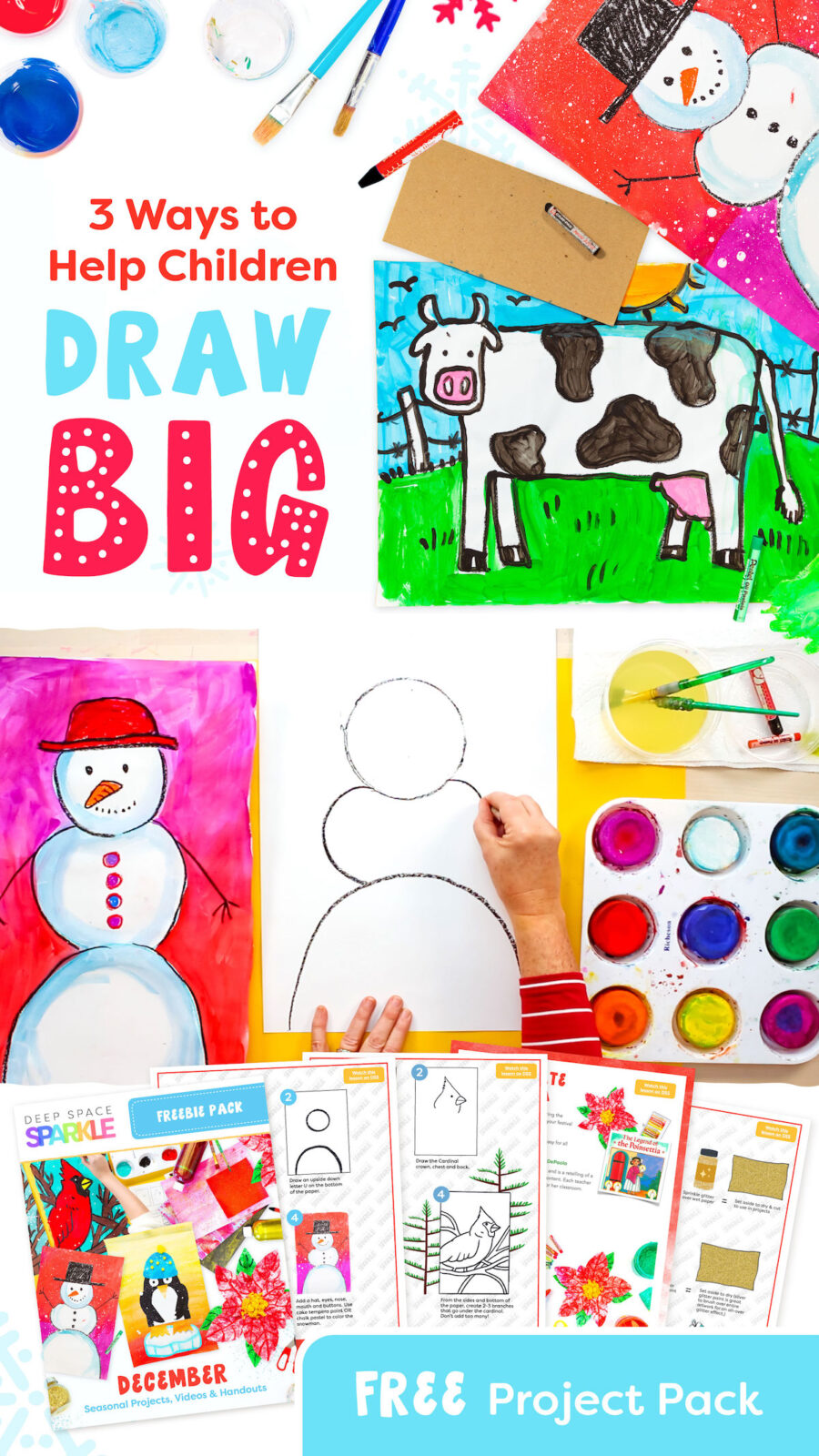

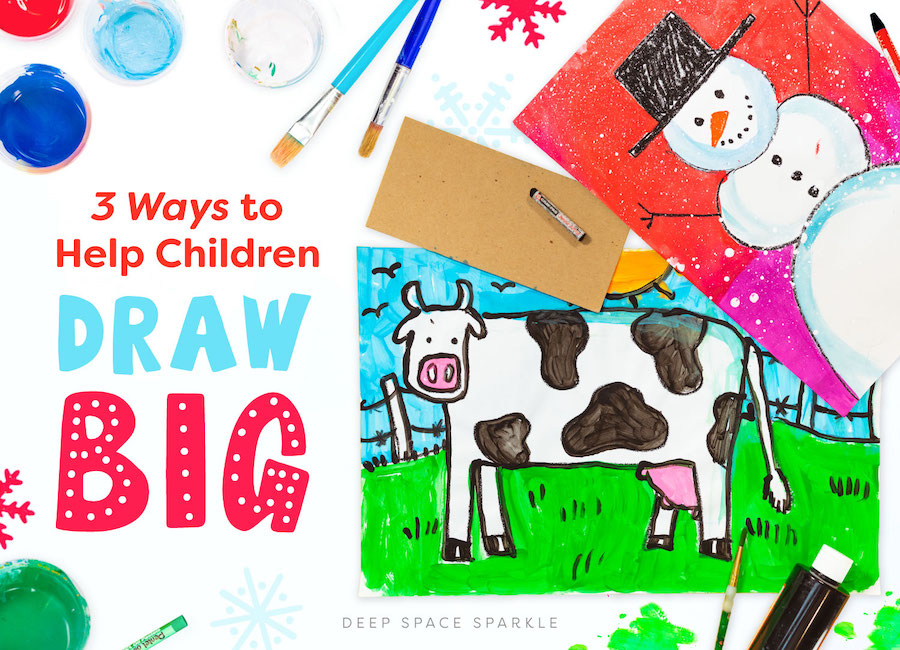












I love the IDEA of having kids draw with an oil pastel, or something other than the pencil. But I work in an inner city school, and spent several years arguing with kids over starting over, and have discovered that they will just melt down if they can’t erase. Any advice?
Hi Janelle! The point of this process is teaching them that they CAN paint over the underdrawing, if they don’t love their drawing– they can use the paints to correct it. Making an underdrawing is a process that many great artists use. Remind them that even master artists make mistakes ?
-Hannah (Team Sparkle)
Also: model, model, model! Have the students watch you make mistakes and how you react to them. “Oops! I don’t like where that line is. I’ll draw one over here instead and then later, when I paint, I’ll just paint over that spot. No big deal!”
Good tips.
I actually used templates in the past with K and first grade classes, something I had forgotten about. The students enjoyed using them.
Hi Sherry,
I’m glad to hear that! Templates are a wonderful way to show students proportion, and get them to feel confident in making the right shapes!
Thank you for reading!
-Hannah (Team Sparkle)
Love this. Brilliant tips.
Love these suggestions. Something we all know, but gets lost in the back of our mind.
Thanks so much as always!
I think the directional and hand placement are vital!
How to draw big
Gostei muito!!!!Parabéns pelo trabalho!!!!!!Muito interessante.
You always have the best, creative, simple reminders.
Love avoiding the pencil, first and creating with oil pastels. Bravo!
Connie
I absolutely love this! I never thought of using template guides. Thank you so much!
Thanks. These tips are practical
And useful.
love it
Very helpful. I would like to have a copy of the 3 tips to get kids to draw big for my records
Thank you for the awesome tips for drawing big. Templates look like a simple and effective way to get kids moving in the right direction.
Great tips!
I would love to learn about templates! I am a new Kindergarten Art Teacher.
Thank you for this video. Great tips in getting kids to draw big. I teach a free community art class and I can have 4-16 year Olds attend. I sometimes struggle getting everyone engaged in the lesson as they are all at different levels. I am hoping to join this group and create some sort of continuity in my classes that all kids will be able to take something from.
I love your projects! They’re fun and manageable and they don’t look like cookie cutter projects.
Thank you so much, I am starting to do drawing classes again after over 10 years retirement. I use to teach with Young Rembrandts to elementary and I want start up again in my new home in Tennessee.
HI, I’ve been an artist (and an architect) for more than 30 years, and I was invited to teach elementary school kids. It ‘s so nice to see your videos, and other tips. thank you
Great ideas!
How to do so as online Art class Teacher would love to get answers from you
I love your work.
I really love the idea,Thank you
Thanks a ton !!! Means a lot
Thank you!